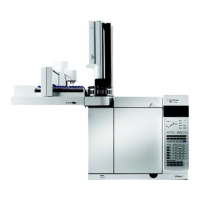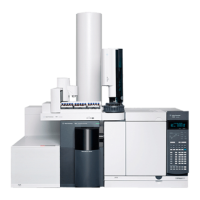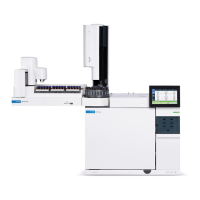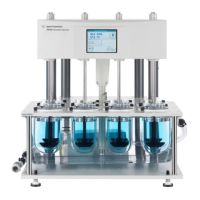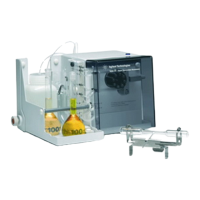Chromatographic Symptoms 3
Agilent 7890 Series Troubleshooting 75
FPD Quenching/Repeatability
Hydrocarbon quenching occurs when a high concentration of
carbon dioxide from a hydrocarbon peak is in the flame at the
same time as the sulfur species. Part of the light emitted by the
sulfur species is absorbed by some CO2 species.
Self-quenching occurs at high concentrations of the heteroatom
species. Some other ground state (inactivated) species
reabsorbs the emitted photon, preventing it from reaching the
PMT.
To resolve hydrocarbon quenching:
• The column should provide good separation of the
compounds, those that contain sulfur or phosphorus as well
as those that do not but may absorb light.
• Optimize the chromatographic separation such that
hydrocarbon peaks are resolved from sulfur or phosphorus
peaks.
1 Run the analysis first on a FID in order to see all the
peaks (the FPD ignores hydrocarbons).
2 Run the analysis on the FPD.
3 Modify the method so that the peak of interest is separate
from the rest of the peaks.

